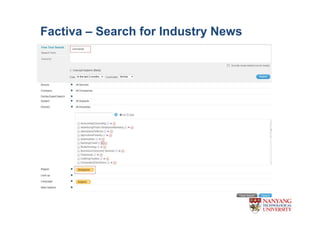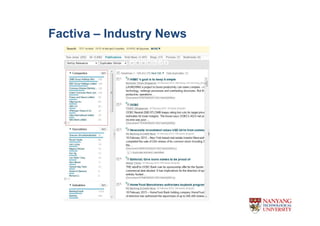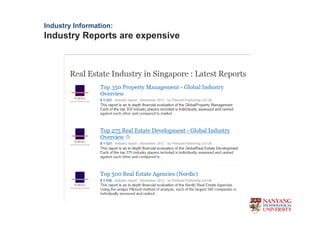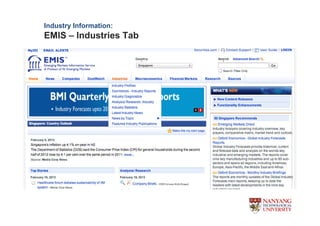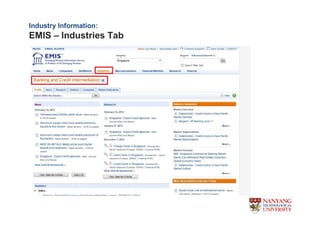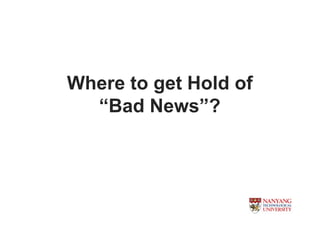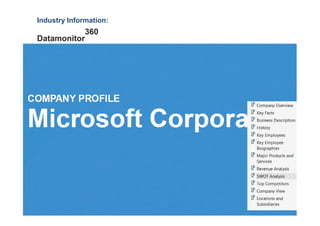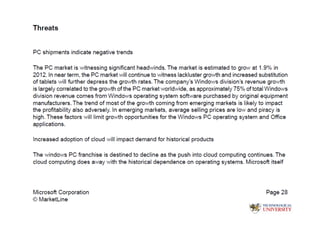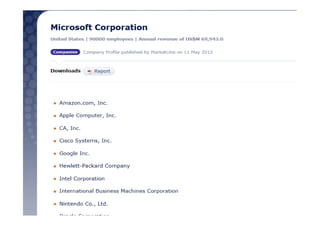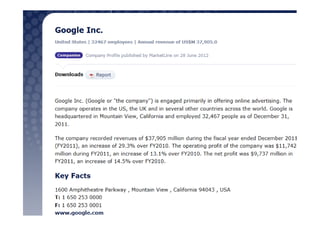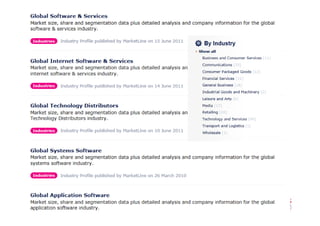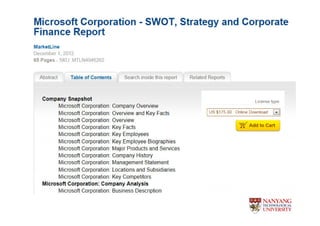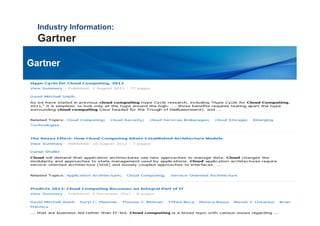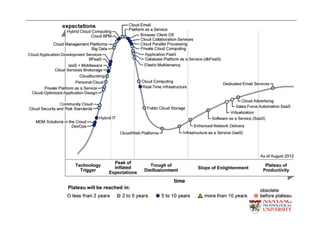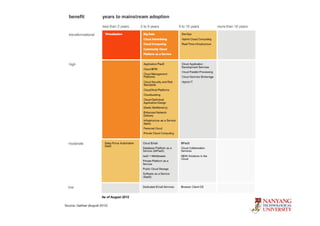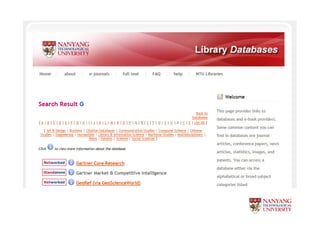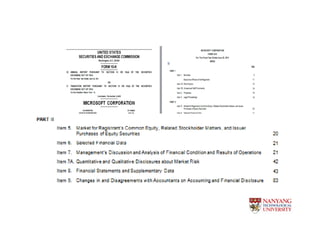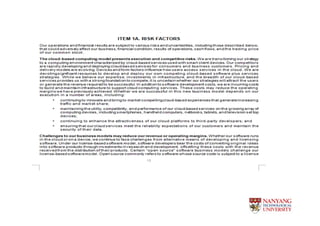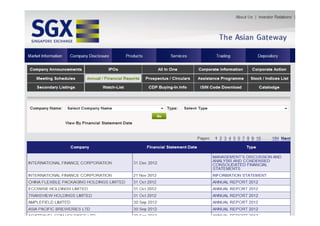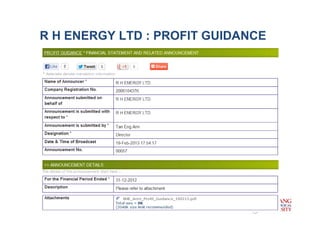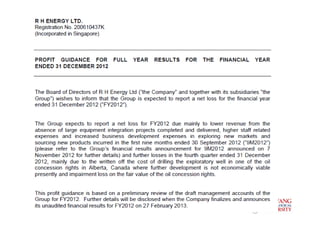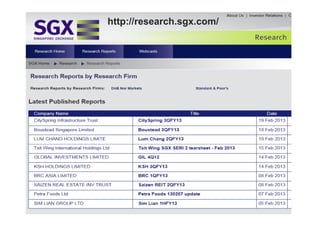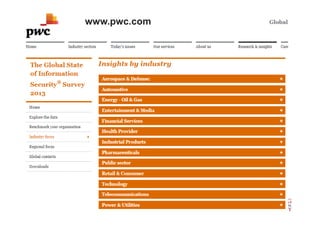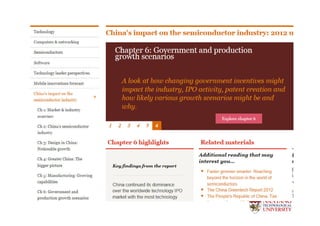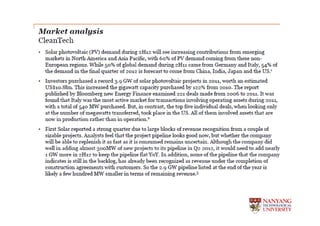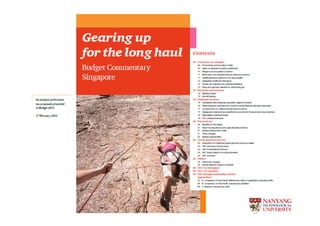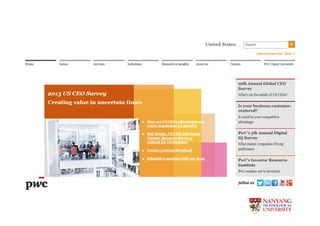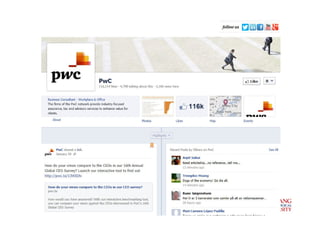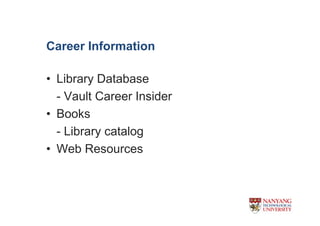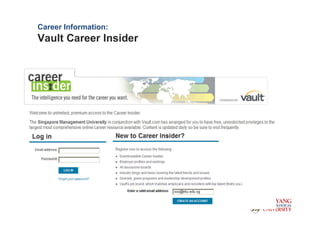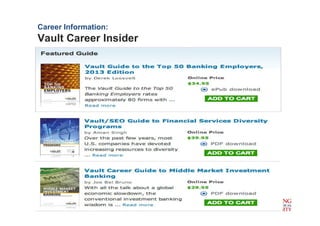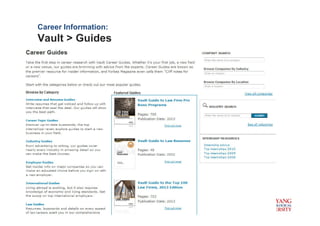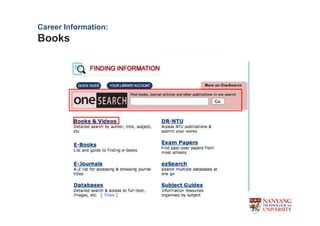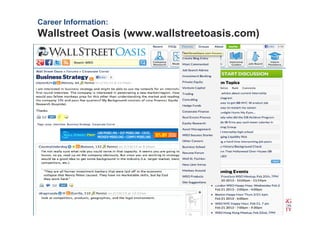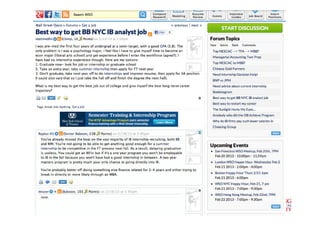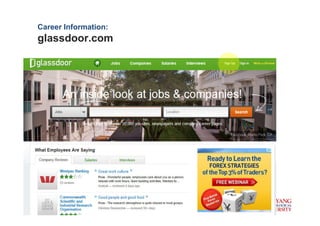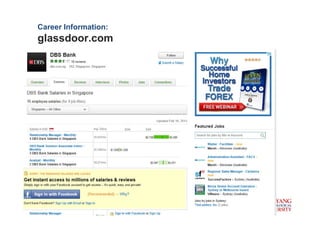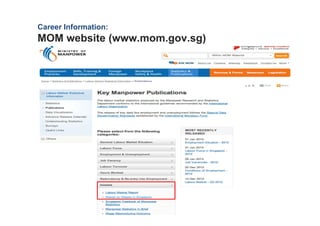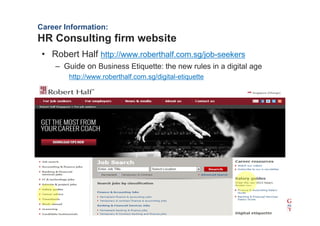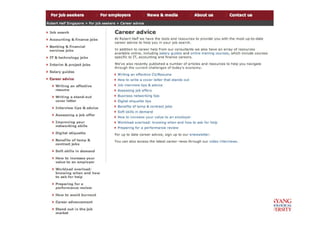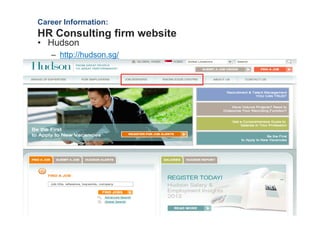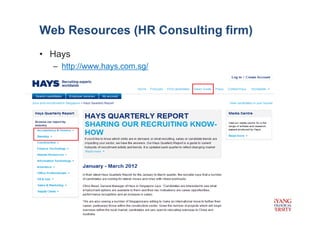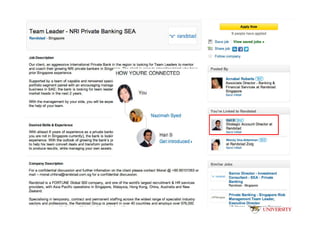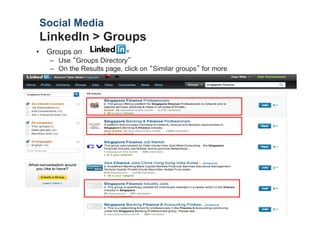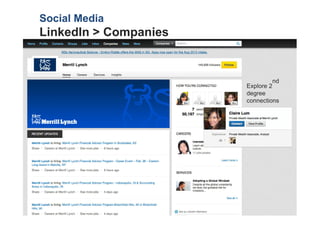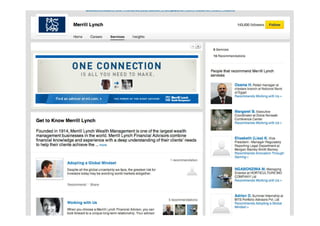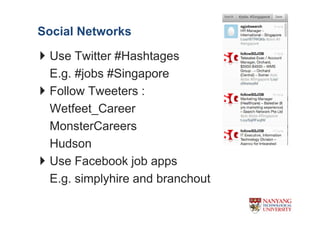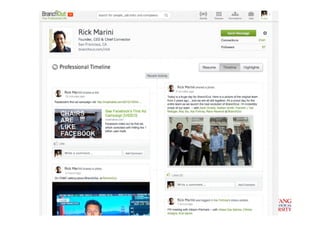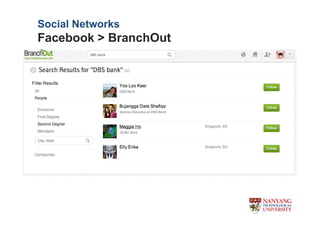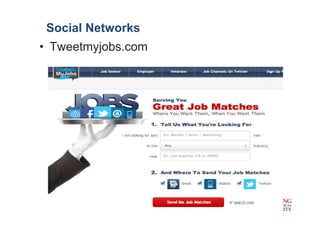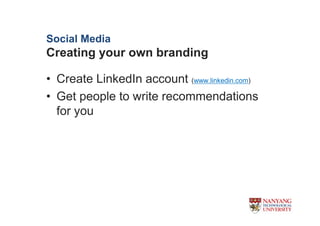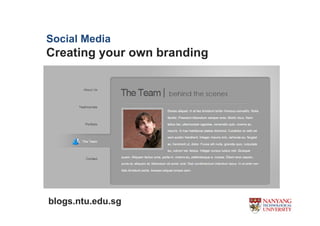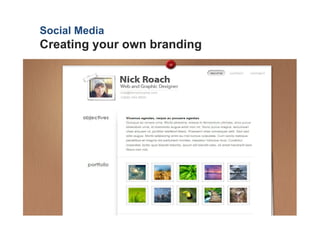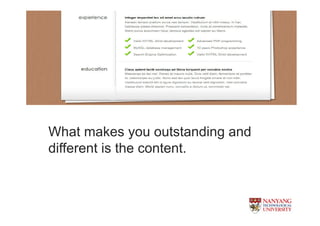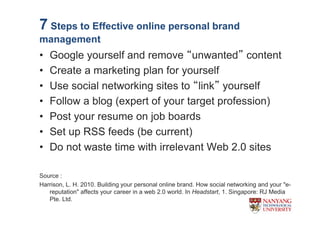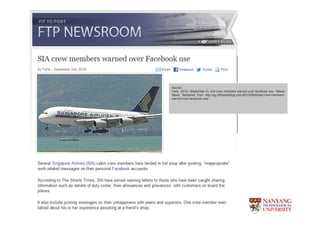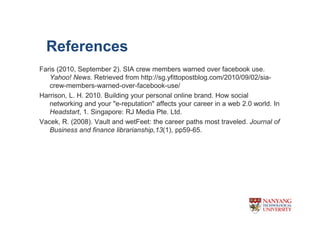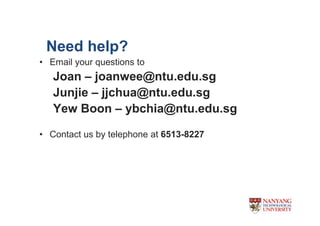Job Hunting using Library Resources & Social Media
- 1. Job Hunting using Library Resources & Social Media presented by Chia Yew Boon, Chua Junjie & Wee Joan Humanities and Social Sciences Library Librarians 20 February 2013, 6 March 2013
- 2. What do you need? ? Company Information ? Industry / Market Information ? Career Information
- 3. Company Information ? Company websites ? Library Databases - One Source [6 concurrent users] - Factiva [20 concurrent users]
- 4. Company Information: Company Website www.credit-suisse.com/sg/
- 11. Company Information: OneSource - Coverage ? Companies (Public & Private) ¨C Corporate overview ¨C Corporate family ¨C Financial information ¨C News and articles ¨C Key executives ¨C Peer analysis
- 12. Company Information: OneSource ¨C Search for the company
- 13. Company Information: OneSource ¨C Company Profile
- 14. Company Information: OneSource ¨C Available Industry Classification Systems ? OneSource Industry OneSource Classification ? ANZSIC 2006 2006 Australian and New Zealand Industry Classification ? NACE 2002 Statistical classification of economic activities in the European Community ? NAICS 2002 North American Industry Classification System ? UK SIC 2003 UK Standard Industrial Classification ? US SIC 1987 US Standard Industrial Classification
- 15. Company Information: OneSource ¨C Corporate Family
- 16. Company Information: OneSource ¨C Build a Company List Activity: 1.Build a list of companies with the following criteria: ? Industry classification code: ANZSIC 2006: 6221¨CBanking ? Country: Singapore 2.¡°Run Search¡± 3.¡°View Results¡± or ¡°Export Results¡± 4.¡°Build Custom Table¡± ¨C Include company name, business description, ownership, address, website, sales, no. of employees, most senior executive name and title ¨C Export report to excel
- 17. OneSource ¨C Build a Company List
- 18. OneSource ¨C Build a Company List
- 19. OneSource ¨C Build a Company List
- 20. OneSource ¨C Build a Company List
- 21. OneSource ¨C Build a Company List
- 22. OneSource ¨C Build a Company List
- 23. Company Information: OneSource ¨C Custom List
- 24. See LinkedIn Profile of Executive
- 25. Company Information Factiva ¨C Company Report ? Coverage: Sources Reuters ¨C Contact information Dun and Bradstreet ¨C Financial ratios Datamonitor ¨C Financial reports ¨C Key executives ¨C News ¨C Peer group ¨C Stock price activity ¨C SWOT analysis
- 26. Factiva ¨C Search for Company News
- 27. Factiva ¨C Search for Company News
- 28. Factiva ¨C Search for Company News
- 29. Factiva ¨C Search for Company News
- 30. Factiva ¨C Search for Company News
- 31. Factiva ¨C Company News
- 32. Industry/Market information ? Library Databases - Factiva [20 concurrent users] - ISI Emerging Markets (EMIS) [5 concurrent users] - Datamonitor 360 - Gartner ? Other sources ¨C SCE Filings - Consulting firms
- 33. Factiva ¨C Search for Industry News
- 34. Factiva ¨C Industry News
- 35. Industry Information: ISI Emerging Markets (EMIS) ¨C Choose a country on the Login page
- 36. Industry Information: Industry Reports are expensive
- 37. Industry Information: EMIS ¨C Industries Tab
- 38. Industry Information: EMIS ¨C Industries Tab
- 39. Industry Information: EMIS ¨C Financial Markets Tab
- 40. Where to get Hold of ¡°Bad News¡±?
- 41. Industry Information: 360 Datamonitor
- 57. R H ENERGY LTD : PROFIT GUIDANCE
- 61. www.pwc.com
- 68. Career Information ? Library Database - Vault Career Insider ? Books - Library catalog ? Web Resources
- 69. Career Information: Vault Career Insider
- 70. Career Information: Vault Career Insider (Login)
- 71. Career Information: Vault Career Insider Allow customization on your profile to receive information about organizations and jobs that are relevant to your interests and needs Allow searching by names of Guides BUT results not consistent e.g. MBA Career Bible
- 72. Career Information: Vault Career Insider
- 73. Career Information: Vault > Guides
- 74. Career Information: Vault > Salaries & Reviews
- 75. Customizable MyVault career profiles sync opportunities to interests. Career Information: Opt in job alerts opportunities and Vault > My Vault career notices Fast and convenient save tools retain content for easy follow up and sharing. Retain blog entries, videos, job searches, job posts, company and industry profiles
- 80. Good Read (Articles) Jacobs, D. L. (2012). How to Work a Room like your Own the Place. Forbes.com http://ezlibproxy1.ntu.edu.sg/login?url=htt p://search.ebscohost.com/login.aspx?dire ct=true&db=buh&AN=72883715&site=eds -live&scope=site
- 82. Career Information: Wallstreet Oasis (www.wallstreetoasis.com)
- 86. Career Information: MOM website (www.mom.gov.sg)
- 87. Career Information: HR Consulting firm website ? Robert Half http://www.roberthalf.com.sg/job-seekers ¨C Guide on Business Etiquette: the new rules in a digital age http://www.roberthalf.com.sg/digital-etiquette
- 89. Career Information: HR Consulting firm website ? Hudson ¨C http://hudson.sg/
- 90. Web Resources (HR Consulting firm) ? Hays ¨C http://www.hays.com.sg/
- 91. Social Media Searching the job
- 93. Social Media LinkedIn > Groups ? Groups on ¨C Use ¡°Groups Directory¡± ¨C On the Results page, click on ¡°Similar groups¡± for more
- 95. Social Media LinkedIn > Companies nd Explore 2 degree connections
- 97. Social Networks Use Twitter #Hashtages E.g. #jobs #Singapore Follow Tweeters : Wetfeet_Career MonsterCareers Hudson Use Facebook job apps E.g. simplyhire and branchout
- 99. Social Networks Facebook > BranchOut
- 102. Social Media Creating your own branding ? Create LinkedIn account (www.linkedin.com) ? Get people to write recommendations for you
- 103. Social Media Creating your own branding blogs.ntu.edu.sg
- 104. Social Media Creating your own branding
- 105. What makes you outstanding and different is the content.
- 106. 7 Steps to Effective online personal brand management ? Google yourself and remove ¡°unwanted¡± content ? Create a marketing plan for yourself ? Use social networking sites to ¡°link¡± yourself ? Follow a blog (expert of your target profession) ? Post your resume on job boards ? Set up RSS feeds (be current) ? Do not waste time with irrelevant Web 2.0 sites Source : Harrison, L. H. 2010. Building your personal online brand. How social networking and your "e- reputation" affects your career in a web 2.0 world. In Headstart, 1. Singapore: RJ Media Pte. Ltd.
- 107. News Article : SIA Crew members warned over facebook use Source : Faris. (2010, September 2). SIA crew members warned over facebook use. Yahoo! News. Retrieved from http://sg.yfittopostblog.com/2010/09/02/sia-crew-members- warned-over-facebook-use/
- 108. References Faris (2010, September 2). SIA crew members warned over facebook use. Yahoo! News. Retrieved from http://sg.yfittopostblog.com/2010/09/02/sia- crew-members-warned-over-facebook-use/ Harrison, L. H. 2010. Building your personal online brand. How social networking and your "e-reputation" affects your career in a web 2.0 world. In Headstart, 1. Singapore: RJ Media Pte. Ltd. Vacek, R. (2008). Vault and wetFeet: the career paths most traveled. Journal of Business and finance librarianship,13(1), pp59-65.
- 109. Need help? ? Email your questions to Joan ¨C joanwee@ntu.edu.sg Junjie ¨C jjchua@ntu.edu.sg Yew Boon ¨C ybchia@ntu.edu.sg ? Contact us by telephone at 6513-8227

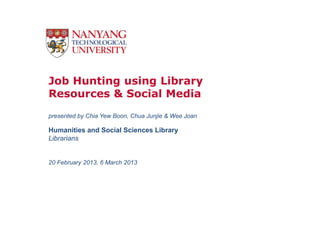
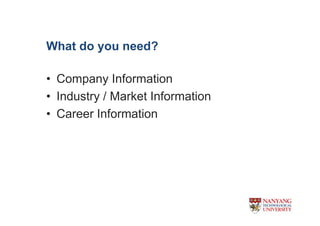
![Company Information
? Company websites
? Library Databases
- One Source [6 concurrent users]
- Factiva [20 concurrent users]](https://image.slidesharecdn.com/jobhuntingworkshopfeb2013-130308021900-phpapp02/85/Job-Hunting-using-Library-Resources-Social-Media-3-320.jpg)
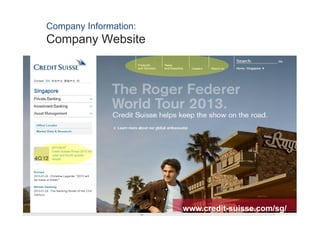

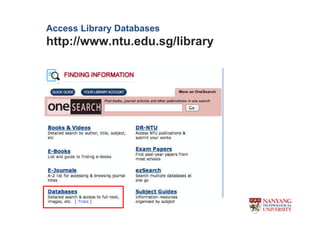

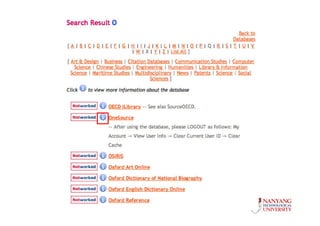

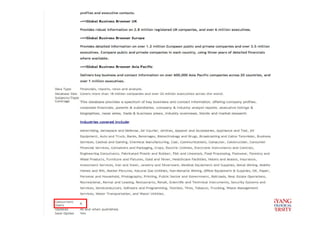

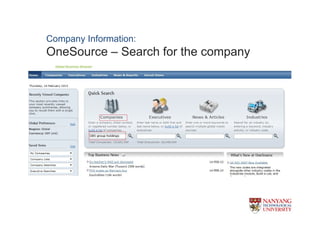



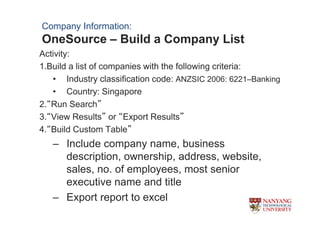

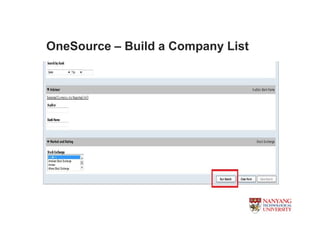
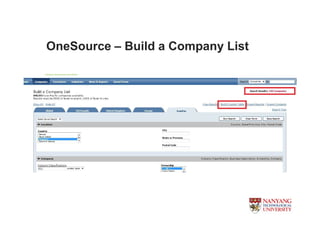

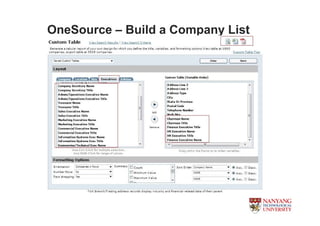
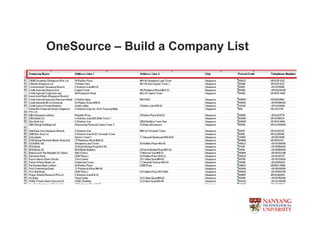
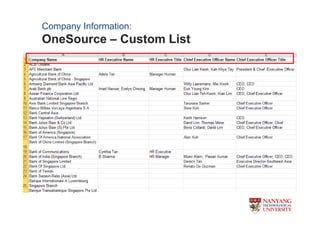
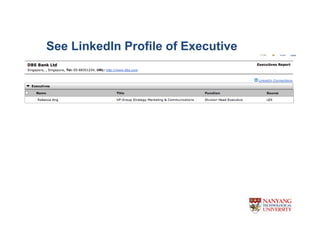
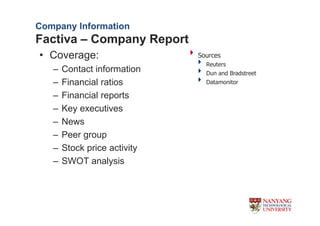
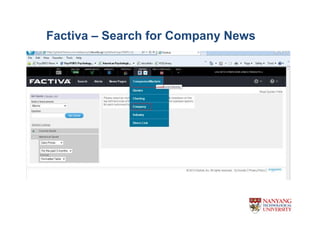
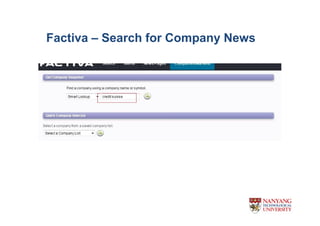
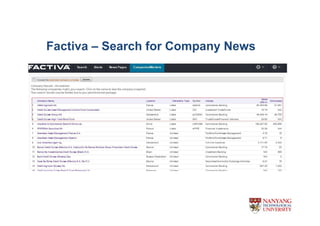

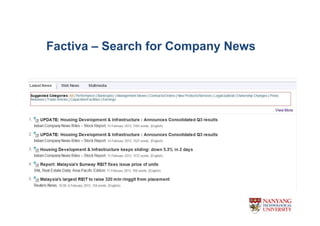
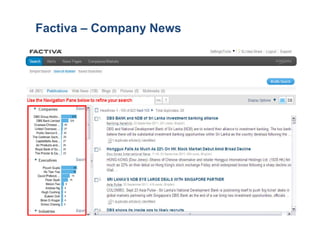
![Industry/Market information
? Library Databases
- Factiva [20 concurrent users]
- ISI Emerging Markets (EMIS) [5 concurrent users]
- Datamonitor 360
- Gartner
? Other sources
¨C SCE Filings
- Consulting firms](https://image.slidesharecdn.com/jobhuntingworkshopfeb2013-130308021900-phpapp02/85/Job-Hunting-using-Library-Resources-Social-Media-32-320.jpg)
